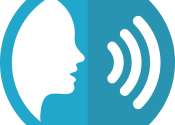Craving inclusion: Study reveals barriers to eating out for people with disability
Many people with disability feel isolated and excluded from eating out, new research shows.

Many people with disability feel isolated and excluded from eating out, new research shows.
Social Sciences
Mar 13, 2024
0
20

When we met each other in Grade 11 in Alberta, we were far from the typical high school success story. Heidi has cerebral palsy and was seen as too disabled for regular schools, and Michelle was a chronic truant and an activist.
Social Sciences
Jan 31, 2024
1
8

October marked alternative and augmentative communication (AAC) awareness month. AAC includes all means of communication that a person may use besides talking. Low-tech methods include means of interaction like hand gestures, ...
Social Sciences
Nov 1, 2023
0
1

University of Oregon scientists have uncovered new clues to the genetic basis for scoliosis, an abnormal curvature of the spine.
Cell & Microbiology
Feb 3, 2023
0
228

At this moment, computer-generated skeletons are competing in a virtual race, running, hopping and jumping as far as they can before collapsing in an electronic heap. Meanwhile, in the real world, their coaches – teams ...
Computer Sciences
Aug 7, 2017
0
3

Cybersecurity is critical—for national security, corporations and private individuals.
Security
Mar 21, 2017
0
406

Maggie Slessor's friends think she's a robot.
Robotics
Aug 11, 2016
0
26

It's not often a mechanical engineer will tell you the highly complicated piece of diagnostic hardware they are working on needs to appeal to 12- to 36-month-old children to be effective. But, to be fair, it's not often they ...
Engineering
Jun 15, 2016
0
24

When UCLA hosted the Special Olympic World Games this summer, a positive message of inclusion and acceptance was amplified. But unfortunately for many people with intellectual and developmental disabilities in other parts ...
Social Sciences
Sep 11, 2015
0
19

The Easy Communicator (ECO) application, which has been designed at the EPSEVG under the auspices of the UPC's Accessibility Chair, is aimed at children with autistic spectrum disorders, adolescents with cerebral palsy and ...
Software
Dec 19, 2014
0
0
Cerebral palsy (CP) is an umbrella term encompassing a group of non-progressive, motor, non-contagious conditions that cause physical disability in human development.
Cerebral refers to the cerebrum, which is the affected area of the brain (although the disorder most likely involves connections between the cortex and other parts of the brain such as the cerebellum), and palsy refers to disorder of movement. CP is caused by damage to the motor control centers of the developing brain and can occur during pregnancy (about 75 percent), during childbirth (about 5 percent) or after birth (about 15 percent) up to about age three. Further research is needed on adults with CP as the current literature is highly focused on the pediatric patient.
Cerebral palsy describes a group of permanent disorders of the development of movement and posture, causing activity limitation, that are attributed to nonprogressive disturbances that occurred in the developing fetal or infant brain. The motor disorders of cerebral palsy are often accompanied by disturbances of sensation, perception, cognition, communication, and behaviour, by epilepsy, and by secondary musculoskeletal problems.
There is no known cure for CP. Medical intervention is limited to the treatment and prevention of complications arising from CP's effects. A 2003 study put the economic cost for CP sufferers in the US at $921,000 per case, including lost income.
In another study, the incidence in six countries surveyed was 2.12–2.45 per 1,000 live births, indicating a slight rise in recent years. Improvements in neonatal nursing have helped reduce the number of babies who develop cerebral palsy, but the survival of babies with very low birth weights has increased, and these babies are more likely to have cerebral palsy.
This text uses material from Wikipedia, licensed under CC BY-SA